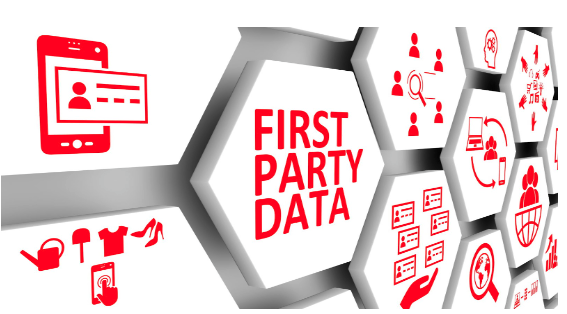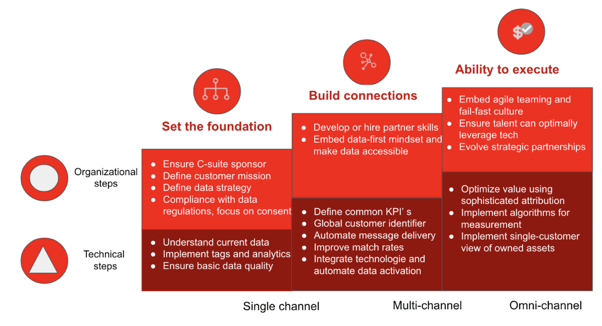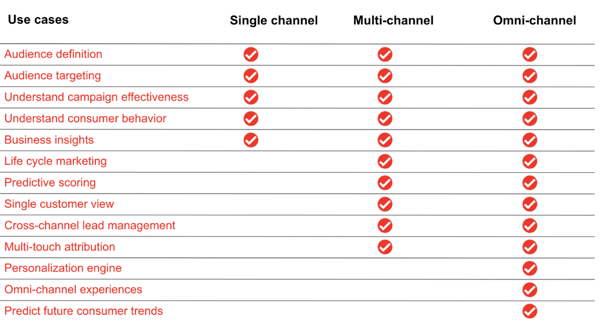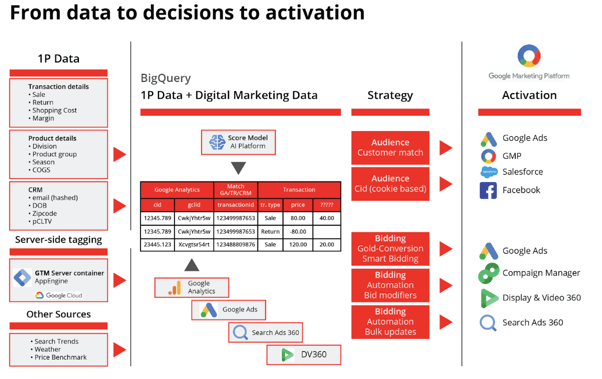Share this
Master first-party data for omni-channel excellence
by Jan Hendrik Fleury on Feb 4, 2022 10:13:55 AM

In today’s world, companies need to show that their products and services are not only of good quality and offer value for money but also personally relevant to consumers at any moment of the day. Access to first-party data is required if you want to provide excellent experiences.
However, getting access to all relevant first-party data of quality means collecting and using data in the brightest possible way. Let’s find out how this can be done and what it brings.
What is first-party data?
First-party data is information about a company's customers that is collected and owned by that same company. This can include a wealth of details, such as purchase history, loyalty status, on- and offline behaviour as part of the customer journeys, preferences, and so on.
It's distinct from zero-party data, which customers explicitly provide about themselves through surveys, preferences, and wishlists.
All relevant data coming from these sources is linked by establishing a unique identifier, for instance, and transformed to define and share audiences with the channels.
Beyond a unified customer view, a well-defined and identified list of use cases helps realize better business outcomes to monetize on the data. Some use cases are covered later in this article.
Challenges using first-party data
Web browsers that restrict ad trackers and stricter privacy laws are making marketers can’t rely on third-party data anymore. This is why they must fall back on first-party data, collected straight from their customers. However, getting the right strategy and technological infrastructure in place to activate the power of first-party data seems to be a struggle for many companies. Even though most organizations have access to technical capabilities, they lack strategy and execution.
Another obstacle to using first-party data is internal silos. Many companies are not leveraging the full capabilities of first-party data in their marketing efforts. Their collections are not integrated and the data ends up in siloed systems and is not made available for broader use. Caution is also an issue.
In some companies, the management is afraid that personalized communications could hurt privacy-sensitive customers.
So how to put first-party data to use?
To achieve business value, there are two tracks; organizational and technical as shown in the image below.

I will explore some aspects of the image. The first organizational step in getting the most out of your first-party data is developing a data strategy that supports a broader business objective and identifying the data you have.
A clear data strategy explains how business objectives are supported by organizing data, processes, and people. The strategy also clearly identifies which data is needed to reach different business goals. Alignment with the IT strategy is essential because data is always related to IT.
A technical step is the collection of the data. Data will be collected, transformed, cleansed, stored, and combined from multiple first-party resources into a view required to support the selected use cases. Ensuring good-quality data is essential at this stage.
The next step is to use the data in the stages of the customer journey and ensure a two-way value exchange between the company and the customer.
The functions of a CDP
Only companies that invest in state-of-the-art automation systems like CDPs are consistently able to link all of their data and use them for automated activation. In this blog I’ve written you can discover the 3 best practices for designing and implementing a CDP.
There are many companies that collect offline interactions, such as calls coming from customer service centres, which include utterances of satisfaction, frustration or unresolved problems, but they are not connecting this data to other data sources or using this data to tailor their messages in digital channels.
If they would invest in the development of a CDP they would be able to create a 360 customer view and deliver better-tailored messages in all their digital channels resulting in better sales numbers.
First party use cases related to maturity
Use cases may extend beyond marketing to support customer strategy, experience, and service functions. We see that marketers differ in the maturity of their use of first-party data.

Companies that move up the maturity ladder on their way to becoming truly omnichannel, are able to manage and deliver personalized customer journeys by:
- Combining multiple online and even offline data sources and linking these to a global customer identifier
- Augmenting existing first-party data with third-party and other data, such as advertising cost and sales data
- Enhancing their first-party data with predictions from AI-powered models that support the different marketing activation activities
Using first-party data in CDP
In order to use the full potential of your first-party data, you need Customer Data Platform functionalities. Data is pulled from multiple sources, cleansed and combined to create a customer profile and is accessible to other systems that help you to get insights or make predictions. Below you find an example use case:

In the image above you can see data coming from different sources. When the first party is collected and normalized, modelling can be applied. Different types of modelling for bidding and audience activation such as conversion models, engagement models and models that predict the customer lifetime value are applied using the Google AI Platform. The sessions are scored and the models are being retrained automatically so different kinds of audience and bidding strategies can be applied.
First-party data might also be used to up-or cross-sell, to predict churn or to predict conversion intent. Customers can be segmented based on frequency and depth of visits and the elapsed time since the last visit. First-party data can also be used in a more advanced way, for example by predicting future consumer trends.
Do you want to become a data-driven company too?
If you feel like your organisation is not using the full potential of first-party data and you need advice about data strategy and marketing automation, schedule a meeting with us. Crystalloids is a Google Cloud Platform specialist building headless modular CDP’s.
Share this
- November 2025 (2)
- October 2025 (2)
- September 2025 (3)
- August 2025 (2)
- July 2025 (1)
- June 2025 (1)
- April 2025 (4)
- February 2025 (2)
- January 2025 (3)
- December 2024 (1)
- November 2024 (5)
- October 2024 (2)
- September 2024 (1)
- August 2024 (1)
- July 2024 (4)
- June 2024 (2)
- May 2024 (1)
- April 2024 (4)
- March 2024 (2)
- February 2024 (2)
- January 2024 (4)
- December 2023 (1)
- November 2023 (4)
- October 2023 (4)
- September 2023 (4)
- June 2023 (2)
- May 2023 (2)
- April 2023 (1)
- March 2023 (1)
- January 2023 (4)
- December 2022 (3)
- November 2022 (5)
- October 2022 (3)
- July 2022 (1)
- May 2022 (2)
- April 2022 (2)
- March 2022 (5)
- February 2022 (2)
- January 2022 (5)
- December 2021 (5)
- November 2021 (4)
- October 2021 (2)
- September 2021 (1)
- August 2021 (3)
- July 2021 (4)
- May 2021 (2)
- April 2021 (2)
- February 2021 (2)
- December 2020 (1)
- October 2020 (2)
- September 2020 (1)
- August 2020 (2)
- July 2020 (2)
- June 2020 (1)
- March 2020 (2)
- February 2020 (1)
- January 2020 (1)
- November 2019 (3)
- October 2019 (2)
- September 2019 (3)
- August 2019 (2)
- July 2019 (3)
- June 2019 (5)
- May 2019 (2)
- April 2019 (4)
- March 2019 (2)
- February 2019 (2)
- January 2019 (4)
- December 2018 (2)
- November 2018 (1)
- October 2018 (1)
- September 2018 (2)
- August 2018 (3)
- July 2018 (3)
- May 2018 (2)
- April 2018 (4)
- March 2018 (5)
- February 2018 (1)
- January 2018 (3)
- November 2017 (2)
- October 2017 (2)



